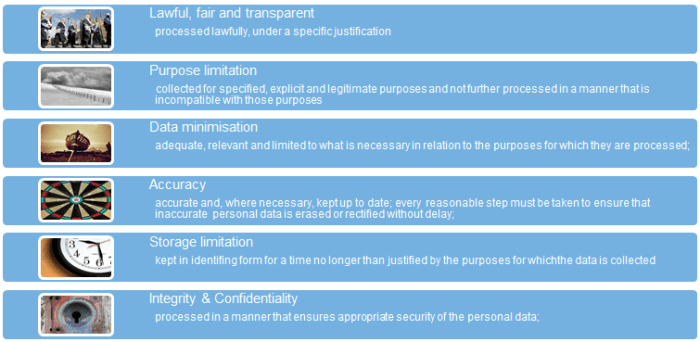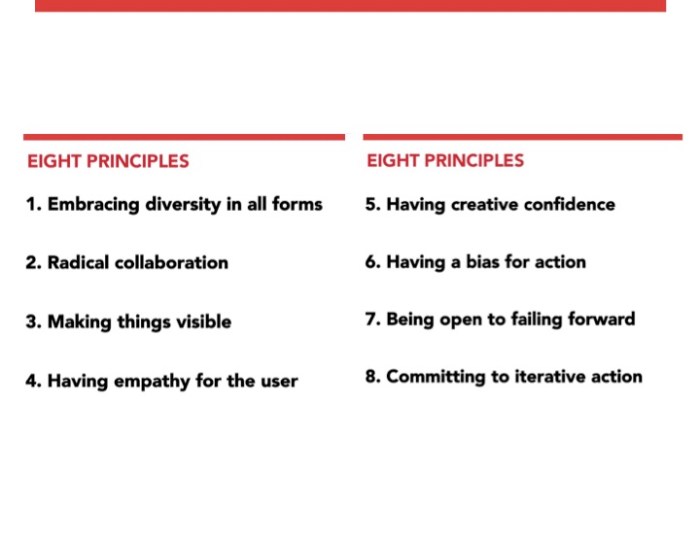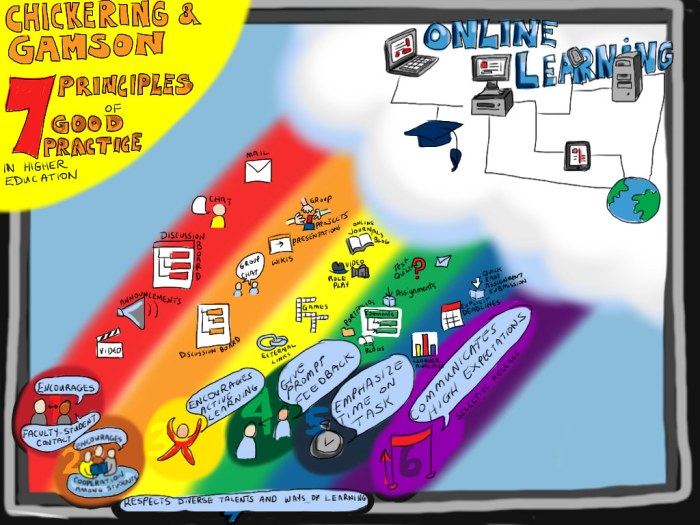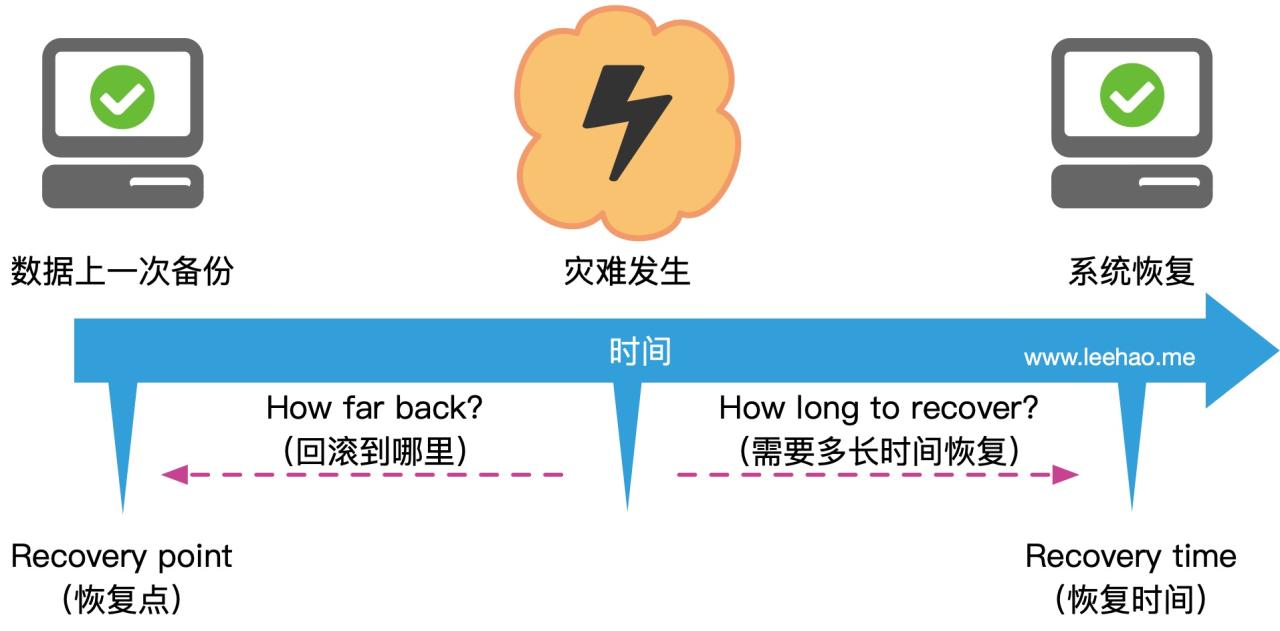Domain-Driven Design (DDD) offers a powerful approach to structuring software, particularly in the context of microservices. This in-depth exploration delves into the core principles of DDD, demonstrating how these principles can be effectively applied to design, develop, and maintain robust and scalable microservice architectures.
This comprehensive guide examines the crucial concepts of DDD, including entities, value objects, aggregates, and domain events. We will also explore the practical application of these concepts within the microservice paradigm, providing real-world examples and illustrative comparisons.
Introduction to Domain-Driven Design (DDD) for Microservices
Domain-Driven Design (DDD) is a software development approach that emphasizes understanding and modeling the domain of a software system. It focuses on building software that effectively addresses the specific needs and complexities of the problem domain. DDD promotes close collaboration between developers and domain experts to ensure that the software accurately reflects the business rules and processes. This iterative approach facilitates the creation of software that is flexible, maintainable, and aligned with business goals.DDD principles provide a structured way to translate business logic into software code.
This approach is particularly valuable in microservice architectures, where each service represents a specific domain component. By employing DDD, developers can create more cohesive and manageable microservices that communicate effectively and adapt to evolving business requirements.
DDD Principles in Microservice Architectures
DDD principles guide the design and development of microservices by encouraging a deep understanding of the domain. This leads to services that are more focused, maintainable, and aligned with business needs. Crucially, the approach fosters better collaboration between developers and domain experts, ensuring that the software effectively addresses the problem domain.
Core DDD Concepts for Microservices
Several DDD concepts are highly relevant to microservice design. These include entities, value objects, aggregates, and repositories. Entities represent objects with unique identities and mutable state. Value objects encapsulate data with no inherent identity, focusing on their value. Aggregates group related entities and value objects, providing a boundary for business logic.
Repositories abstract data access, allowing services to interact with data without knowing the underlying storage mechanism.
Comparison of Monolithic vs. Microservice Architectures
| Feature | Monolithic Application | Microservice Architecture | Role of DDD |
|---|---|---|---|
| Structure | Single, large codebase | Decoupled, independent services | Guides the design of individual services, ensuring cohesion and clear boundaries within each. |
| Development | Often involves a large team working on a single codebase, leading to potential conflicts and bottlenecks. | Smaller, more focused teams can work independently on each service, promoting faster development and scalability. | Facilitates clear separation of concerns, enabling efficient and organized development of each service. |
| Scalability | Scaling the entire application can be challenging and expensive. | Individual services can be scaled independently based on demand, enabling efficient resource utilization. | Helps in defining granular services, which can be scaled separately based on their specific needs and usage patterns. |
| Maintenance | Modifying a single component can have unintended consequences across the entire application. | Changes to one service do not directly impact others, making maintenance easier and less error-prone. | Ensures that each service adheres to well-defined domain boundaries, which reduces the risk of cascading failures and simplifies maintenance. |
| Technology Stack | Often a single technology stack | Allows flexibility in choosing the optimal technology for each service. | Allows for selection of technology stacks that best fit the specific needs of each service, improving efficiency. |
This table illustrates the significant differences between monolithic and microservice architectures, highlighting the crucial role of DDD in guiding the design and implementation of microservices. By adhering to DDD principles, developers can create more maintainable, scalable, and resilient microservice applications.
Entities and Value Objects in Microservices

Entities and value objects are fundamental concepts in Domain-Driven Design (DDD) that help model the domain logic within a microservice. They represent different aspects of the data and their relationships within the context of the microservice. Understanding these distinctions allows for a more robust and maintainable microservice architecture.Effective modeling of entities and value objects within microservices is crucial for ensuring data integrity, maintainability, and scalability.
This section delves into the characteristics of entities and value objects, their identification, and implementation in various programming languages, providing concrete examples within the microservice context.
Identifying Entities and Value Objects
Entities are objects that have unique identities and maintain their identity over time. Value objects, on the other hand, are objects that are characterized by their properties and their identity is derived from their properties. The key differentiator lies in how their identity is defined. Identifying entities and value objects requires a deep understanding of the business domain.
Careful analysis of the domain model is essential to distinguish between objects that require unique identification and those whose identity is determined by their attributes.
Modeling Entities in Microservices
Entities represent domain objects with unique identifiers. In a microservice context, an entity might be a Customer, an Order, or a Product. A Customer entity, for example, would have a unique customer ID and other attributes like name, address, and order history. The uniqueness of the customer ID ensures that each customer is uniquely identifiable. The order history is part of the entity, and its relationship with other entities like Orders is handled through appropriate relationships in the domain model.
Modeling Value Objects in Microservices
Value objects represent data that is characterized by their properties and their identity is determined by those properties. Examples of value objects include addresses, prices, and dates. An address, for instance, is defined by its street, city, state, and zip code. The identity of an address is determined by the combination of these attributes. Crucially, two addresses with the same properties are considered the same value object.
Implementation in Different Programming Languages
- Java: Entities are typically implemented as classes with unique identifiers (e.g., UUIDs or database generated IDs). Value objects are often implemented as immutable classes with appropriate equality checks based on their attributes.
- Python: Python’s object-oriented nature makes implementing both entities and value objects straightforward. Unique identifiers can be implemented using UUIDs or database-generated IDs. Value objects are commonly implemented as immutable classes, ensuring data integrity.
- JavaScript: In JavaScript, entities and value objects are modeled as objects. Entities often utilize libraries like UUIDs for unique identifiers. Value objects are typically represented as immutable objects with specific methods to compare their equality based on their properties.
Comparison of Entities and Value Objects
| Feature | Entity | Value Object |
|---|---|---|
| Identity | Unique identifier (e.g., customer ID) | Identity derived from attributes (e.g., address) |
| Mutability | May be mutable | Immutable |
| Equality | Equality based on unique identifier | Equality based on attributes |
| Example (Microservice) | Customer with unique CustomerID, name, address | Address with street, city, state, zip code |
Aggregates and Aggregate Roots
Domain-Driven Design (DDD) introduces the concept of aggregates and aggregate roots to model complex domain logic in a structured way. This approach is particularly valuable when designing microservices, as it helps to encapsulate related data and business rules within a single boundary, promoting data integrity and reducing complexity. This structure allows for efficient management of data relationships and simplifies interaction with the domain model.Aggregates and aggregate roots represent a core building block in DDD, crucial for maintaining data consistency and managing interactions within a microservice.
They define a set of related entities and value objects that are treated as a single unit of work. This concept is especially relevant in microservice architectures, as it helps to isolate and encapsulate specific business logic and data within a service boundary.
Defining Aggregates and Aggregate Roots
An aggregate is a cluster of related objects that are treated as a single unit. This group ensures consistency among the objects within the aggregate. The aggregate root is the central object within the aggregate, responsible for managing the integrity and consistency of all objects within its aggregate. It serves as the primary entry point for all operations on the aggregate.
Applying Aggregates in Microservice Design
Aggregates promote data consistency and reduce complexity in microservice design. When a microservice interacts with an aggregate, it only needs to interact with the aggregate root. This isolates the internal complexity of the aggregate and simplifies the service’s interaction with other services. The aggregate’s boundary encapsulates the related data and business rules, reducing the need for complex inter-service communication.
Benefits of Using Aggregates
- Data Consistency: Aggregates enforce consistency by ensuring that all related data within the aggregate is updated or modified atomically. This minimizes data corruption and ensures the data integrity.
- Reduced Complexity: Aggregates encapsulate the internal complexity of the domain model, simplifying interactions with the microservice. This results in simpler and more maintainable code.
- Improved Performance: By encapsulating related data and logic, aggregate design can lead to more efficient data retrieval and processing. Fewer interactions with other services can improve response time.
- Enhanced Maintainability: Aggregates help to create a more modular and maintainable microservice architecture by clearly separating concerns.
Trade-offs of Using Aggregates
- Increased Complexity in Some Cases: Defining and managing aggregates can be complex, particularly for complex domains. Careful consideration is required to ensure that aggregates are appropriately sized and designed.
- Potential Performance Bottlenecks: In some cases, a large or poorly designed aggregate can introduce performance bottlenecks if not managed properly. This depends on the size and complexity of the aggregate.
- Potential for Tight Coupling: If not designed carefully, aggregates can lead to tight coupling between services. The design should strive for a balance between aggregation and decoupling.
Example of an Aggregate Root
Consider a microservice for managing orders. An order aggregate might consist of an order header (aggregate root) and multiple order items.
| Class | Description |
|---|---|
| Order | Represents the order header. Contains information like order ID, customer, and total amount. Responsible for validating order data and managing order items. |
| OrderItem | Represents an individual item within an order. Contains information like product ID, quantity, and price. |
The `Order` class (aggregate root) manages the consistency of the order and its items. Any operation on the order (e.g., adding an item, updating the quantity, or confirming the order) would be performed through the `Order` class. This ensures that all related data (order header and items) is modified atomically and consistently.
Domain Events and Event Sourcing
Domain events, a core concept in Domain-Driven Design (DDD), represent significant occurrences within a domain model. These events capture the important happenings that affect the state of the system and provide a mechanism for decoupling components. They are not just notifications but crucial data points that can drive actions across the entire system.Understanding and leveraging domain events is crucial in microservice architectures, as they allow microservices to react to changes in other parts of the system without tightly coupled dependencies.
This promotes autonomy and scalability within the microservice landscape.
Domain Events in DDD
Domain events are encapsulated occurrences that reflect a significant change in the domain. They are typically not directly involved in the handling of a specific request but rather provide a notification of an important action taken within the system. This allows other parts of the system, potentially across different microservices, to react to this event.
Using Domain Events to Drive Changes Across Microservices
Domain events act as a communication mechanism between microservices. When an event occurs, it is published to a message queue or similar event bus. Other microservices, subscribed to that event type, can then process the event and update their internal state accordingly. This approach decouples the services, enabling them to evolve independently while maintaining consistency.
Event Sourcing in a Microservice Context
Event sourcing is a technique where the state of an entity is derived from a sequence of events. Instead of directly updating the state, events are recorded, and the state is reconstructed from these events. This approach is particularly useful in microservices due to its ability to provide an immutable audit trail of changes. By recording all events, a complete history of an entity is available, enabling easier debugging, rollback, and versioning.
The immutable nature of events also supports efficient querying and analysis.
Implementing Event Sourcing in a Microservice: Example
Consider a microservice handling customer orders. When a customer places an order, a “OrderPlaced” domain event is generated. This event contains details about the order, such as the customer ID, product IDs, and quantities.
- The order processing microservice publishes the “OrderPlaced” event to an event bus.
- Other microservices, like an inventory microservice, subscribe to the “OrderPlaced” event. Upon receiving the event, the inventory microservice decrements the inventory levels for the ordered products.
- A separate microservice responsible for shipping updates its database with the order details based on the event.
This example demonstrates how domain events can trigger actions in multiple microservices, promoting a more robust and decoupled system. Each microservice is responsible for its specific task, and communication occurs through the events.
Repositories and Data Access in Microservices
Repositories play a crucial role in Domain-Driven Design (DDD) by abstracting the interaction with the underlying data store. In microservices architectures, this abstraction becomes even more critical, enabling independent evolution of the service and the data layer without impacting other services. Repositories encapsulate data access logic, promoting loose coupling and maintainability. This separation allows services to focus on their specific business logic, while repositories handle the complexities of data persistence.Repositories in DDD decouple the domain model from the persistence mechanism, enabling the service to be updated independently of the database technology used.
This improves flexibility and maintainability. This decoupling is essential in microservice architectures where different services might utilize different databases or data stores.
Repository Patterns in Microservices
Various repository patterns can be employed to implement data access in microservices. The choice of pattern depends on the specific needs of the service and the complexity of the data model. Each pattern offers distinct advantages and disadvantages. A crucial aspect is ensuring data consistency and integrity within the context of the service’s domain.
- Simple Repository: This straightforward pattern maps directly to the database table. It’s suitable for services with simple data models and minimal data manipulation logic. Its simplicity makes it easy to understand and implement, but it might lack flexibility when the data model grows in complexity.
- Paging Repository: Crucial for large datasets, this pattern allows for efficient retrieval of data in manageable chunks. This approach is especially relevant in microservices that need to process massive amounts of data, ensuring performance and avoiding memory overload. The implementation involves pagination logic to retrieve data in specific pages, allowing the service to work with data subsets rather than the entire dataset at once.
- Custom Repository: For services with specific data access requirements or complex queries, this pattern allows for tailored implementations. This customized approach allows the service to precisely control the data retrieval process and can incorporate intricate query logic or transformations specific to the domain. However, it requires more development effort and may lead to more complex code.
- Specification Repository: This pattern utilizes specifications to define data retrieval criteria. This allows for greater flexibility and reusability. The specifications encapsulate the criteria for retrieving data, enabling the service to retrieve data based on different criteria without modifying the core repository logic. This promotes code maintainability and enhances the overall system’s resilience.
Repository Implementation Examples
Different programming languages offer various libraries and frameworks for implementing repositories. Here are examples for Java and Python.
Java Example (Spring Data JPA)
“`java// Interface for the repositorypublic interface UserRepository extends JpaRepository
Python Example (SQLAlchemy)
“`pythonfrom sqlalchemy.orm import sessionmakerfrom sqlalchemy import create_engine# … database connection setup …class UserRepository: def __init__(self, engine): self.engine = engine self.Session = sessionmaker(bind=engine) def get_user_by_id(self, user_id): session = self.Session() user = session.query(User).filter(User.id == user_id).first() session.close() return user“`
Repository Pattern Comparison
| Repository Pattern | Description | Suitability for Microservices |
|---|---|---|
| Simple Repository | Direct mapping to database tables | Suitable for simple data models, less complex services |
| Paging Repository | Handles large datasets efficiently | Essential for microservices dealing with large volumes of data |
| Custom Repository | Tailored for specific data access needs | Beneficial for complex queries or specialized requirements |
| Specification Repository | Uses specifications to define retrieval criteria | Promotes flexibility and reusability, beneficial for dynamic queries |
Use Cases and Services
Defining and modeling use cases is crucial for designing microservices that are aligned with specific business needs. A well-defined use case clarifies the interaction between the system and its users, providing a blueprint for service design. This structured approach ensures that each microservice focuses on a particular aspect of the application, enhancing maintainability and scalability.Understanding use cases in the context of microservices allows for a modular design.
Each use case, translated into a microservice, can be independently deployed, scaled, and updated, facilitating faster development cycles and increased agility. This modularity also allows for easier maintenance and troubleshooting, as issues are more easily localized to specific microservices.
Identifying and Modeling Use Cases
Use cases describe how users interact with the system to achieve a specific goal. Identifying use cases requires careful consideration of the system’s functionalities and the actors involved. This process involves understanding user requirements and mapping out the steps involved in completing a task. For example, in an e-commerce platform, a use case might be “placing an order,” detailing steps like selecting products, adding to cart, and confirming the order.
Designing Services Based on Use Cases
Designing microservices based on use cases involves mapping each use case to a specific service. This mapping ensures that each service has a well-defined responsibility, contributing to a more manageable and maintainable architecture. For instance, the “placing an order” use case might be implemented as a dedicated order service.
Use Case Diagrams and Microservices
Use case diagrams provide a visual representation of use cases and the actors involved. These diagrams can be valuable tools for understanding the system’s functionalities and their interactions. A use case diagram for the “placing an order” use case might show the customer actor interacting with the order service to place an order. This diagram illustrates the flow of interactions between the actors and the system.
Implementing Services for a Specific Use Case
Implementing services for a specific use case involves several steps. First, define the service’s inputs and outputs. Second, design the service’s logic to handle the use case’s steps. Third, define the data structures required for the service. For example, the order service might accept customer details, product information, and payment details as inputs and return an order confirmation as output.
The service’s logic would handle validating inputs, processing the order, and updating the order status.
Example: Order Placement Microservice
Consider a use case for placing an order in an e-commerce platform. This use case involves the customer selecting products, adding them to a cart, and confirming the order. This use case could be implemented as a dedicated order placement microservice. This microservice would be responsible for handling all aspects of order placement, from receiving the order details to updating the inventory and generating the order confirmation.
Bounded Contexts and Microservice Boundaries
Bounded contexts, a core concept in Domain-Driven Design (DDD), provide a crucial framework for structuring software systems, particularly microservices. They delineate distinct areas of responsibility within a larger domain, enabling independent development and deployment of microservices. Understanding the relationship between bounded contexts and microservice boundaries is essential for building scalable and maintainable applications.Defining clear boundaries is critical for microservices.
By aligning microservice boundaries with bounded contexts, developers can create more cohesive and manageable units of functionality. This approach enhances code maintainability and reduces the risk of unintended side effects across different parts of the system.
Defining Microservice Boundaries Based on Bounded Contexts
Appropriate microservice boundaries are crucial for ensuring independent deployments, scalability, and maintainability. They are directly linked to the bounded contexts within the domain model. A bounded context encapsulates a specific area of the domain model, isolating its concerns and logic. Mapping these bounded contexts to microservices creates clear responsibilities and promotes better code organization.
Structuring Microservices Based on Bounded Contexts: An Example
Consider a hypothetical e-commerce platform. The domain encompasses multiple bounded contexts, including product catalog, order processing, user accounts, and payment gateway. Each of these bounded contexts could be a separate microservice. For instance, the product catalog microservice would handle all aspects of product information, while the order processing microservice manages order placement, fulfillment, and tracking.
Examples of Bounded Contexts and Corresponding Microservice Responsibilities
| Bounded Context | Microservice Responsibilities |
|---|---|
| Product Catalog | Managing product information, including details, images, pricing, and availability. Includes product searches and inventory management. |
| Order Processing | Handling order placement, fulfillment, tracking, and order status updates. This includes integration with logistics providers. |
| User Accounts | Managing user accounts, including registration, login, profiles, and permissions. This might also include user roles and privileges. |
| Payment Gateway | Processing payments, handling different payment methods, and managing payment transactions. This often involves integrations with various payment processors. |
| Customer Service | Managing customer inquiries, support tickets, and resolving customer issues. |
Modeling Microservice Interactions

Microservices architectures rely heavily on effective communication between independent services. This crucial aspect requires careful design choices that balance efficiency, maintainability, and data consistency. Properly structured interactions ensure that microservices can collaborate seamlessly to fulfill complex business requirements.Designing communication between microservices while adhering to Domain-Driven Design (DDD) principles necessitates a deep understanding of the domain model. The communication patterns should reflect the relationships and responsibilities defined within the domain model, fostering a cohesive and understandable architecture.
Communication Patterns
Effective communication between microservices is fundamental to their success. Different patterns address various needs, and selecting the right one is crucial for performance and maintainability. Common patterns include REST and gRPC.
- REST (Representational State Transfer) is a widely adopted architectural style for building web services. RESTful APIs use HTTP methods (GET, POST, PUT, DELETE) to interact with resources, typically represented by URLs. Its simplicity and ubiquity make it a popular choice for inter-service communication. REST is well-suited for scenarios requiring broad access and a standard, well-understood protocol.
- gRPC (Google Remote Procedure Call) offers a more efficient alternative for microservices communication, especially when dealing with high-frequency interactions. gRPC leverages Protocol Buffers for data serialization, resulting in smaller payloads and faster transfer times compared to REST. gRPC’s strong typing and performance benefits make it a compelling option for communication within a well-defined domain where efficiency is paramount.
Data Consistency and Transaction Management
Maintaining data consistency across multiple microservices is a significant challenge. Transactions spanning multiple services require careful consideration. The chosen communication pattern, combined with the implementation of appropriate mechanisms, plays a critical role in ensuring data integrity.
- Saga Pattern: For complex transactions that involve multiple microservices, the Saga pattern is often employed. This pattern decouples the transaction into a series of smaller, individual transactions within each service, each with its own compensation logic. This approach allows for handling failures and rollbacks more effectively.
- Eventual Consistency: In scenarios where strict real-time consistency isn’t critical, eventual consistency strategies can be applied. These approaches prioritize speed and scalability over immediate data synchronization. Data will eventually converge to a consistent state, albeit with a potential delay.
- Two-Phase Commit (2PC): While useful in some situations, this protocol is generally not recommended for microservices due to its potential for blocking and increased complexity. It is better suited for monolithic applications where tight coupling and synchronous communication are easier to manage.
Example: Order Processing Microservice Interaction
Consider an e-commerce scenario with order processing, inventory management, and payment processing microservices. The order processing service receives an order request. It interacts with the inventory service to verify product availability. If successful, it proceeds to the payment service for authorization. If all validations pass, the order processing service updates its own database, the inventory service, and the payment service.
- Scenario: An order for a product is placed. The order processing service initiates a request to the inventory service using a gRPC call.
- Interaction: The inventory service returns the availability of the product. The order processing service then calls the payment service to authorize the payment. Using the Saga pattern, the payment service returns confirmation or denial.
- Result: If successful, the order processing service updates its database, and the inventory service updates its stock levels. If there’s an error at any stage, the Saga pattern ensures appropriate compensation actions are taken.
Designing for Scalability and Maintainability
Designing microservices for scalability and maintainability is crucial for their long-term success. This involves anticipating future growth and change, and implementing strategies that allow for efficient expansion and modification without compromising performance or introducing complex dependencies. Well-structured microservices, adhering to DDD principles, can significantly enhance these characteristics.Effective scalability and maintainability are not simply about technical aspects, but also about a thoughtful design process.
Careful consideration of data flow, communication patterns, and the application’s architecture are paramount to ensure that the system remains robust and adaptable as requirements evolve. Understanding the trade-offs between different scaling strategies is essential for making informed decisions.
Strategies for Scalable and Maintainable Microservice Design
A comprehensive approach to designing scalable and maintainable microservices requires a multi-faceted strategy. This includes considering various factors, such as data storage, communication protocols, and the architecture itself. Designing with scalability and maintainability in mind from the outset is crucial for long-term success.
- Decoupling Microservices: Independent microservices are essential for maintainability. Changes in one service shouldn’t necessitate modifications in others. This promotes modularity, reducing the risk of cascading failures and simplifying maintenance. Coupling through shared data or tightly integrated dependencies can significantly hinder both scalability and maintainability.
- Asynchronous Communication: Utilizing asynchronous communication patterns, such as message queues, enhances scalability. This decouples services, enabling them to operate independently and scale based on their individual needs. It also reduces latency and improves overall responsiveness.
- API Design Considerations: Employing well-defined and documented APIs facilitates maintainability and interoperability. Clear, consistent, and versioned APIs promote easier integration with other services and facilitate future enhancements.
- Infrastructure Automation: Automating infrastructure deployment and scaling is vital for scalability. Tools like Docker and Kubernetes can automate the process, allowing for rapid deployment and scaling of services as needed. This significantly reduces manual intervention and potential errors.
DDD Principles for Scalability and Maintainability
DDD principles directly contribute to the scalability and maintainability of microservices. The focus on domain modeling, bounded contexts, and well-defined interactions leads to more robust and understandable services.
- Domain Modeling: A well-defined domain model encapsulates the core business logic, making the system more understandable and maintainable. Clear separation of concerns between domain logic and infrastructure facilitates changes and extensions.
- Bounded Contexts: Defining clear boundaries for each microservice encapsulates the domain logic, simplifying the overall system. This modularity promotes scalability and maintainability by isolating changes within specific contexts.
- Ubiquitous Language: Consistent terminology and shared understanding across the development team enhances communication and reduces ambiguity, leading to a more maintainable system. A clear language facilitates collaboration and reduces errors.
Comparison of Scaling Approaches
Several approaches exist for scaling microservices. Choosing the right strategy depends on the specific needs and characteristics of the application.
| Scaling Approach | Description | Suitable for |
|---|---|---|
| Horizontal Scaling | Adding more instances of a microservice to handle increased load. | Applications with predictable load patterns and independent services. |
| Vertical Scaling | Increasing the resources (CPU, memory) of a single microservice instance. | Applications with limited scalability requirements and where resource limitations are the primary bottleneck. |
| Database Scaling | Scaling the database to accommodate the growing data volume. | Applications with high data volume or complex queries. |
Example Microservice Design for Scalability
A well-designed microservice, considering future scalability and maintainability, prioritizes decoupling, asynchronous communication, and a clear domain model. Imagine a retail order processing microservice. Instead of directly interacting with the inventory microservice, it uses a message queue for inventory updates. This approach decouples the services, enabling independent scaling and simplifying maintenance.
Last Point

In conclusion, applying DDD principles to microservice development yields numerous benefits, including enhanced maintainability, scalability, and resilience. By carefully considering the principles of DDD, developers can build microservices that are not only functional but also robust, adaptable, and capable of supporting long-term growth. We’ve navigated the intricacies of DDD within the context of microservices, highlighting practical application and best practices for effective implementation.
Quick FAQs
What are the key differences between entities and value objects in a microservice context?
Entities are uniquely identifiable objects with inherent state and behavior, while value objects are objects that are defined by their properties, not their identity. In microservices, this distinction influences data modeling and persistence strategies. Entities often represent core domain objects, while value objects capture data attributes.
How do I choose the right repository pattern for a microservice?
The best repository pattern depends on the specific needs of the microservice. Factors like data complexity, access patterns, and consistency requirements should guide the decision. For instance, a simple read-only repository might suffice for value objects, while a more complex pattern might be needed for entities requiring transactions and relationships.
What are some common challenges when implementing event sourcing in microservices?
Implementing event sourcing in microservices can be challenging due to the distributed nature of the system. Ensuring data consistency across various services and handling eventual consistency across microservices are key challenges. Proper event handling and distributed transaction management are critical to success.
How can I ensure data consistency across interacting microservices?
Data consistency across interacting microservices is vital for reliable application behavior. Strategies such as using idempotent operations, ensuring eventual consistency, and employing appropriate message queues can be used to maintain data integrity.


